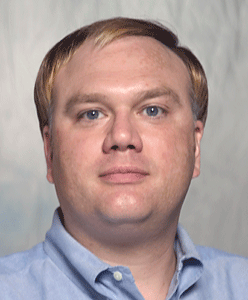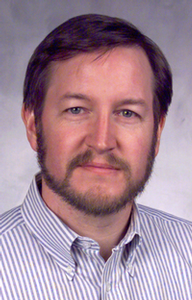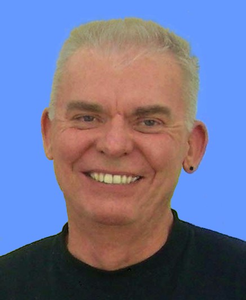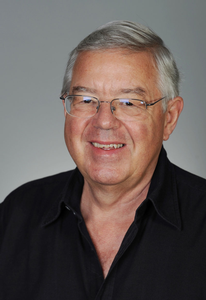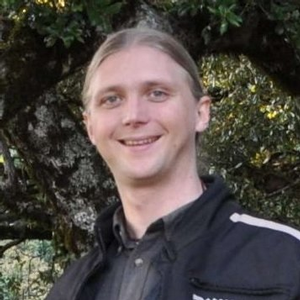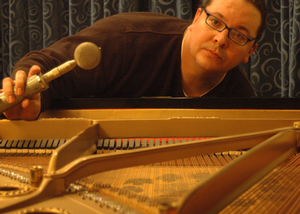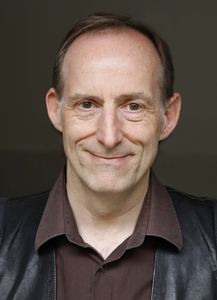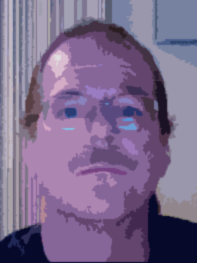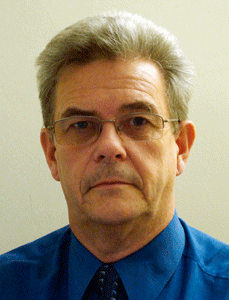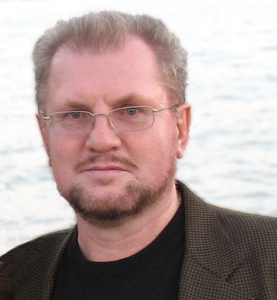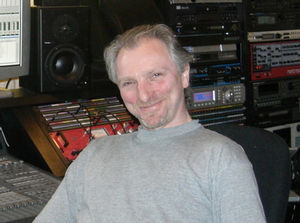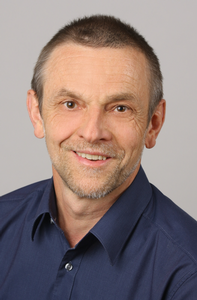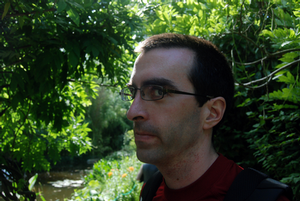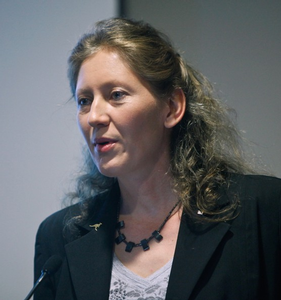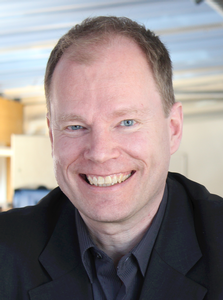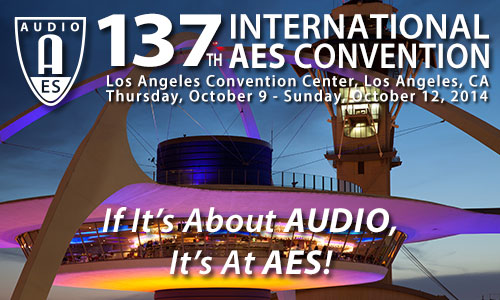
AES Los Angeles 2014
Tutorial Details
Thursday, October 9, 9:00 am — 11:00 am (Room 406 AB)
T1 - Loudspeaker Design, Part 1: Almost Everything You Ever Wanted to Know About Loudspeaker Design —A Master Class
Presenter:Christopher Struck, CJS Labs - San Francisco, CA, USA
Abstract:
This tutorial will walk the audience through an entire loudspeaker design as well as introducing the basic concepts of loudspeakers. Equivalent circuits, impedance, and Thiele-Small Parameters are shown. Inherent driver nonlinearities are explained. The effects of modal behavior and cone breakup are demonstrated. Closed Box and Ported Box systems are analyzed and several design examples are meticulously worked through, both with hand calculations and using CAD. Passive Radiator, Band Pass, and Transmission Line systems are also shown. Issues with multiple drivers and cabinet construction are discussed. Directivity and diffraction effects are illustrated. Crossover network design fundamentals are presented, with a specific design example for the previously shown ported enclosure design. A brief overview of room acoustic effects on loudspeakers is also presented.
 | This session is presented in association with the AES Technical Committee on Loudspeakers and Headphones |
Thursday, October 9, 9:00 am — 10:30 am (Room 306 AB)
T2 - MPEG-H 3D Audio
Presenter:Schuyler Quackenbush, Audio Research Labs - Scotch Plains, USA
Abstract:
MPEG-H 3D Audio is the newest MPEG Audio standard. With the move to Ultra-High Definition video and large screens that provide an immersive visual experience, it is compelling to have an equally immersive audio experience. MPEG-H 3D Audio provides both compression and flexible rendering for such immersive audio programs. These can be, for example, 9.1 or 22.2 channel audio programs for presentation on loudspeakers or spatialized for headphones. In addition, programs can include dynamic audio objects or can be Higher Order Ambisonic recordings. The standard makes extensive use of metadata to control the audio presentation and to support user interaction. A very important aspect of 3D Audio is its rendering engine. It is not expected that all consumers would have a 22.2 loudspeaker setup, so the rendering engine is able to adapt the audio program to the loudspeaker configuration of the consumer’s setup. This can include fewer loudspeakers, incorrectly place loudspeakers or non-standard loudspeaker configurations. The tutorial will review example scenarios in which immersive audio can be enjoyed (home theater, tablet TV, smartphone TV); give an overview of the technology; and give a look at compression and rendering performance.
 | This session is presented in association with the AES Technical Committee on Coding of Audio Signals |
Thursday, October 9, 9:00 am — 11:00 am (Room 408 B)
T3 - An Overview of Audio System Grounding and Signal Interfacing—A Master Class
Presenter:Bill Whitlock, Whitlock Consulting - Oxnard, CA, USA
Abstract:
Equipment makers like to pretend noise problems don't exist, but this tutorial replaces myth and hype with insight and knowledge, revealing their true causes. Unbalanced interfaces are exquisitely vulnerable to noise due to an intrinsic problem. Although balanced interfaces are theoretically noise-free, they're widely misunderstood by equipment designers, resulting in equipment with inadequate noise rejection in real-world systems. Another widespread design error gives some equipment a built-in noise problem. Simple, no-test-equipment troubleshooting methods can not only identify this equipment but pinpoint the exact location and cause of hum and buzz. Signal-path ground isolators are generally the best solution. Optimum interfaces between unbalanced and balanced connections, RF interference, and power-line treatments are also discussed as well as why some widely-used "cures" are both illegal and deadly.
Thursday, October 9, 10:45 am — 12:45 pm (Room 306 AB)
T4 - Sound Reproduction: The State of Our Science
Presenter:Floyd Toole, Acoustical consultant to Harman, ex. Harman VP Acoustical Engineering - Oak Park, CA, USA
Abstract:
Sound Reproduction: The State of Our Science
Most of the music we enjoy is generated by loudspeakers of differing pedigree, and propagated to our ears through spaces that can mostly be described as acoustically arbitrary. In spite of the obvious huge variations, humans have managed to not only enjoy reproduced music, but sometimes even to exhibit enthusiasm for it. Common acoustical measurements confirm the variations. Are they wrong? Do they matter? In double-blind subjective evaluations of loudspeakers in rooms, listeners exhibit strong and remarkably consistent opinions about the sound quality from loudspeakers. The challenge has been to identify those technical measurements that correlate with the subjective ratings. What is it that these listeners are responding to? This review will examine the acoustical properties of loudspeakers (the sound source), rooms (the acoustical conveyance) and listeners (the powerfully perceptive, and adaptable receptor). In some respects, our problems began when we started to make certain kinds of simplistic measurements. Two ears and a brain do not respond to complex sound fields the way an omnidirectional microphone and analyzer do. Belief that “room equalization” is a universal cure-all has added to the confusion. Much of the applied acoustical science was developed for large, reverberant, venues, not those most used for sound reproduction. We can do better. At the present time the audio industry is significantly lacking in meaningful standards, material specifications and loudspeaker performance descriptions. As a consequence, opinions often substitute for facts.
Thursday, October 9, 11:15 am — 12:45 pm (Room 409 AB)
T5 - Prototyping Audio Algorithms as VST Plugins
Presenter:Edward Stein, DTS, Inc. - Los Gatos, CA, USA
Abstract:
Professional algorithm designers, hobbyist programmers with a passion for audio, and experimentalist musicians often have a common challenge–“How do I hear my idea come to life?” Forums are full of posts with subjects like “I want to…, where do I start?” Depending on your budget, very comprehensive tools are out there with various trade-offs on ease and control. This tutorial looks at a powerful open-source C++ framework, JUCE for rapidly prototyping your ideas as VSTs (and other plugin formats) with a real-time graphical user interface. The focus will be on kick-starting beginners with a limited but working knowledge of C++. Topics will include: good practice for building a highly reusable C++ audio class library, basics of real-time audio plugins, quickly setting up and working with JUCE projects, real-time parameters (GUI, MIDI control, presets, etc.), and troubleshooting tips for when things don’t go as you planned. By the end, you should be comfortable building your own VST plugins and be able to move forward focusing on what you care about–how it sounds.
Thursday, October 9, 11:30 am — 12:30 pm (Room 408 B)
T7 - All About: The Decibel
Presenter:Alex Case, University of Massachusetts Lowell - Lowell, MA, USA
Abstract:
The decibel is defined by an equation. “Yuck!” some might say. However that equation is rich with meaning and need not be a source of confusion. Total mastery of the decibel makes interfaces far more informative, specs sheets so much clearer, and every session easier.
Thursday, October 9, 11:45 am — 12:15 pm (Room 309)
T6 - Produce 3D Audio for Music, Film, and Game Applications
Presenter:Tom Ammermann, New Audio Technology GmbH - Hamburg, Germany
Abstract:
Beyond of formats and applications but having later distribution in mind, the session will show production strategies and tools in 3D audio. Complete sessions from different genres will be opened and setups will be explained. Furthermore current and future end customer application and distribution possibilities will be shown.
Thursday, October 9, 12:15 pm — 12:45 pm (Room 309)
T8 - Produce 3D Headphone Entertainment
Presenter:Tom Ammermann, New Audio Technology GmbH - Hamburg, Germany
Abstract:
Over 80% of the people listen to their music with headphones. The exploding mobile entertainment is close to a 100% headphone application. Furthermore evolution seems not to give humans a third ear. So headphones are not a fashion but a huge application now and in the future at all. How to conquer this marked and how to produce new virtual 3D audio productions is the task of this session.
Thursday, October 9, 2:15 pm — 3:45 pm (Room 409 AB)
T9 - Dither and Noise Shaping in Digital Audio: Hows and Whys
Presenter:Duane Wise, Wholegrain Digital Systems LLC - Boulder, CO, USA
Abstract:
This tutorial investigates finite-word-length in digital audio: how it differs from analog audio, the side-effects of signal quantization, and how the adverse effects of quantization can be diminished via dither and/or noise shaping. The tutorial presents the theory of quantization along with a live interactive audio demonstration that illustrates the motivation behind the theory.
The author invites attendees to download the presentation materials at http://www.wholegrain-ds.com/DigAud_Dither.pdf.
 | This session is presented in association with the AES Technical Committee on Signal Processing |
Thursday, October 9, 4:30 pm — 6:00 pm (Room 409 AB)
T10 - Speech Transmission Index (STI) Measurements in Practice
Presenter:Peter Mapp, Peter Mapp Associates - Colchester, Essex, UK
Abstract:
The Speech Transmission Index is today the most widely used international measure of potential speech intelligibility. In particular it is cited and performance requirements are incorporated in many national and international sound system and emergency sound system / voice alarm system standards and codes of practice. Few standards however state how STI performance should be measured and the equipment required to carry out such measurements. The workshop will discuss measurement techniques, data analysis, measurement equipment (including smart phone apps), equipment calibration, and the capture and logging of measurement data. The tutorial will be given by Dr. Peter Mapp, a leading authority on STI measurement and the current chairman of IEC 60268-16—the international standard relating to STI.
 | This session is presented in association with the AES Technical Committee on Acoustics and Sound Reinforcement |
Friday, October 10, 9:00 am — 10:00 am (Room 404 AB)
T11 - All About: Phase vs. Polarity
Presenter:Alex Case, University of Massachusetts Lowell - Lowell, MA, USA
Abstract:
The word “phase” is misused almost as often as it is properly applied. Meantime, its close cousin “polarity” is consistently neglected. Worst of all, the two terms are frequently, mistakenly, interchanged. Phase and polarity are essential but distinct concepts that, when fully understood, help the engineer get better sounds, quicker.
Friday, October 10, 10:30 am — 12:30 pm (Room 404 AB)
T12 - Acoustics—Sorting it Out and Getting it Right
Presenter:Tony Hoover
Abstract:
This tutorial on architectural acoustics covers three distinct issues: sound isolation (airborne and structure-borne), HVAC noise control, and surface treatments (absorption, reflection, and diffusion). The format has been widely used, including for over 25 years at Berklee College of Music. The objective is to provide the foundation for optimized audio design and recording decisions, and the confidence to better navigate the oceans of information and propaganda about "acoustical" products and practices.
 | This session is presented in association with the AES Technical Committee on Acoustics and Sound Reinforcement |
Friday, October 10, 11:45 am — 12:45 pm (Room 309)
T13 - Let Your Eyes Help Your Ears—Techniques and New Challenges in Audio Metering
Presenter:Paul Tapper
Abstract:
Why use audio analysis or metering at all? Why loudness metering is relevant to engineers working in the music industry and the implications for music mastering practice. If you think that your music might ever get played out on TV, radio, or a music streaming service, you need to have an awareness of loudness normalization. The importance of true-peak metering for music to avoid distortion and fizzing caused by codec conversions. The importance of mono compatibility for music that might ever be listened to on iPod docks, flat-screen TVs, DAB radios, or club PAs. The difficult of auditioning this, and pitfalls to avoid when trying to meter it
Friday, October 10, 5:00 pm — 6:30 pm (Room 309)
T14 - Loudspeaker Design Part 2: Horn Drivers—History, Theory, and Technology—A Master Class
Presenter:Alexander Voishvillo, JBL/Harman Professional - Northridge, CA, USA
Abstract:
Horn drivers are the oldest "electrical" transducers and their invention preceded the development of the direct-radiating loudspeaker. Historically, several major inventions in the late 1800s and early 1900s triggered the invention and development of horn drivers; it was the invention of the telephone, radio, phonograph, and triode. Principles of operation for the compression driver, based on matching the output mechanical impedance of the vibrating diaphragm and the loading impedance of the phasing plug and horn, were understood since the beginning of the 1900s. The motors of the early compression drivers were based on a moving armature rather than on a moving coil.
Saturday, October 11, 9:00 am — 10:15 am (Room 408 A)
T15 - All About: Timbre
Presenter:Alex Case, University of Massachusetts Lowell - Lowell, MA, USA
Abstract:
One of the most important properties of audio, timbre’s definition may be broader than you think. Distilling timbre into its essential elements reveals its rich meaning and lets us make a direct connection between it and the decisions, actions, and devices that drive it. Much is in the hands of the performer—their technique and their instrument. Engineers have obvious impact through microphone choice and placement. But we also focus on how to use compression, delay, reverb, and distortion effects to refine timbre.
Saturday, October 11, 9:00 am — 11:00 am (Room 409 AB)
T16 - Audio Forensics: An Overview
Presenters:Jeff M. Smith, National Center for Media Forensics - Denver, CO, USA; University of Colorado Denver - Denver, CO, USA
Durand R. Begault, Audio Forensic Center, Charles M. Salter Associates - San Francisco, CA, USA
Eddy B. Brixen, EBB-consult - Smorum, Denmark
Catalin Grigoras, University of Colorado at Denver - Denver, CO, USA
Gordon Reid, CEDAR Audio Ltd - Cambridge, UK
Abstract:
This tutorial will feature several presenters engaged in various areas of audio forensics in lively discussion geared toward experts learning from one another and to benefit the introductory attendee. Tutorial Chair, Jeff M. Smith (National Center for Media Forensics, CU Denver) and chair of the Technical Committee on Audio Forensics, will present on Speaker Analysis and the application of Bayesian likelihood. Catalin Grigoras (NCMF, CU Denver) will present on the best practices and future challenges in forensic audio authentication. Gordon Reid (CEDAR Audio Ltd.) will present on noise reduction and speech enhancement techniques. Eddy Brixen (EBB consult) will present on auditory crime scene analysis. Finally, Durand Begault (Audio Forensic Center) will wrap up some loose ends with a discussion of forensic audio miscellany including musicological forensics, warning signal audibility, acoustics, and more.
 | This session is presented in association with the AES Technical Committee on Audio Forensics |
Saturday, October 11, 11:15 am — 1:15 pm (Room 409 AB)
T17 - Contemporary Approaches to Programming Drums
Presenter:Justin Paterson, London College of Music, University of West London - London, UK
Abstract:
Drum programming has often faced boundaries in terms of how effectively it could address the complexities of certain genres. This tutorial will explore and push some of these boundaries as implemented in contemporary professional practice, showing contrasting techniques used in the creation of both human emulation and the unashamedly synthetic, across genres from Swing to Glitch. The session will include numerous live demonstrations covering a range of approaches using different DAWs and bespoke software using multi-touch techniques. Although introducing all key concepts from scratch, its range and hybridization should provide inspiration even for experienced practitioners.
 | This session is presented in association with the AES Technical Committee on Recording Technology and Practices |
Saturday, October 11, 2:00 pm — 4:00 pm (Room 406 AB)
T18 - Acoustical Output-Based Evaluation of Sound System Equipment
Presenter:Wolfgang Klippel, Klippel GmbH - Dresden, Germany
Abstract:
This tutorial session will cover best practices for loudspeaker measurements. It is critical for product development and component selection to know the response of loudspeaker systems and components with reasonable accuracy in order to make informed decisions based on comparisons of data. In this session we will briefly cover the basics of FFT-based measurement systems before moving on to additional topics.
• Averaging and S/N Windowing (both signal acquisition and impulse response windowing)
• Ground plane measurement techniques
• Directivity measurements
• Maximum input voltage measurements
• Impedance
• Alignment of pass bands
Traditional loudspeaker measurements as described in the IEC standard 60268-5 require access to the loudspeaker terminals and use the voltage and electrical input power for assessing the sensitivity, power handling, frequency response and other meaningful characteristics. These standards cannot be applied to active sound systems where signal processing, amplification and passive transducers are combined to one physical unit and the audio signal is supplied by wave-file, wireless transmission or in any other digital format.
This tutorial gives a review on the current standard activities in AES, IEC and other committees to develop output-based evaluation techniques applicable to all kinds of loudspeakers and sound reproduction systems. The maximum sound pressure level SPLmax as rated by the manufacturer is not only a meaningful characteristic for the end user but also the basis for calibrating the stimulus provided by any input channel. Sinusoidal chirp signals, multi-tone, burst and other modern test signal require standardization to ensure comparability of the measurement data. Acoustic simulation of loudspeaker-room interaction, the progress in 3D sound reproduction systems and growing importance of personal audio requires comprehensive data describing the near and far field of the source. There is also a need to develop standardized measurement techniques for detecting impulsive distortion generated by voice coil rubbing, loose particles, air leakage and other loudspeaker defects which have a high impact on sound quality.
Saturday, October 11, 4:00 pm — 6:00 pm (Room 305)
3D Tutorial Demos
Presenters:Tom Ammermann, New Audio Technology GmbH - Hamburg, Germany
Lasse Nipkow, Silent Work GmbH - Zurich, Switzerland
Abstract:
D1 Presenter: Tom Ammermann
Listen to 3D Audio Music, Film, and Game Productions
This session is connected to T6 an T8 on Thursday. Talking about 3D audio, how to do and produce and which tools and strategies could be usefully is one issue. But to hear how the result could sound is mandatory to understand and prove it. This is what the session should provide. Many music and some film and game 3D audio productions will be shown and explained.
D2 Presenter: Lasse Nipkow
The Sense of Depth in Stereo and 3D
The sense of depth is, next to image and sound, one of the essential parameters in classical recordings: The listener can hear the individual instruments of a body of sound at different distances, similar to the arrangement of instruments in an orchestra. The psychoacoustic principles related to a natural sounding sense of depth are multidimensional. Important parameters are the balance between direct and room sound of a sound source, as well as the relation between levels of different direct sounds and the spectral characteristics of the different instruments. The acoustics of the recording room has a significant influence on the sense of depth, because early reflections and reverberation arise from the room. During the presentation, the above-mentioned aspects will be demonstrated with example recordings
Saturday, October 11, 5:00 pm — 6:00 pm (Room 404 AB)
T19 - Psychoacoustics for Sound Designers
Presenter:Shaun Farley, Dynamic Interference - Berkeley, CA, USA
Abstract:
This session will explore some of the mechanical and psychological oddities that affect our perception of sound. This will be focused on the sound designer's perspective. As such, it will be more about identifying end behaviors of the human hearing system than the underlying reasons for those behaviors. Some we develop awareness of through experience in our work, while others remain sub-conscious until they're presented to us. This is meant to be a starting place for us to begin talking about how we can use these behaviors as tools for sonic storytelling.
 | This session is presented in association with the AES Technical Committee on Audio for Cinema |
Sunday, October 12, 9:00 am — 10:30 am (Room 404 AB)
T20 - Audio Goes Video: Multimedia-Based Preservation of the Collection Oskar Sala or “How to Safeguard Hitchcocks The Birds”
Presenter:Nadja Wallaszkovits, Phonogrammarchiv, Austrian Academy of Science - Vienna, Austria
Abstract:
Oskar Sala was a German musician, scientist and a pioneer of electronic music. He played and further developed the trautonium, a predecessor of the synthesizer. He composed the scores for more than 300 films and created the effect soundtrack for Alfred Hitchcock's film 'The Birds', receiving many awards for his works. After his death he left a collection of about 1200 analogue magnetic audio tapes, stored in the archives of Deutsches Museum in Munich. Oskar Sala fully exploited all the possibilities of analogue tape technology, using impressive experimental approaches. His tapes have become artworks themselves, as they comprise a unique richness of very special metadata: cut up to 200 times per reel, Sala used the tapes as a (more or less readable) notebook. Such and many more surprises made the adequate safeguarding and digitization of the collection a unique undertaking. The collection has been successfully digitized under the consultancy of the Phonogrammarchiv Vienna. The tutorial outlines the various challenges of this project and discusses the parameters and practical problems of the audio transfer, as well as the strategy of safeguarding the richness of metadata by use of multimedia-based documentation, such as photographic capturing and high definition video recording.
 | This session is presented in association with the AES Technical Committee on Archiving Restoration and Digital Libraries |
Sunday, October 12, 10:15 am — 11:45 am (Room 409 AB)
T21 - Listening Tests—Understanding the Basic Concepts
Presenter:Jan Berg, Luleå University of Technology - Piteå, Sweden
Abstract:
Listening tests and other forms of data collection methods that rely on human responses are important tools for audio professionals, as these methods assist our understanding of audio quality. There are numerous examples of tests, either formally recommended and widely used, or specially devised for a single occasion. In order to understand listening tests and related methods, and also to potentially design and fully benefit from their results, some basic knowledge is required. This tutorial aims to address audio professionals without prior knowledge of listening test design and evaluation. The fundamentals of what to ask for, how to do it, whom to engage as listeners, what sort of results that may be expected and similar issues will be covered, preferable in co-operation with the audience. The goal is to create an understanding of the basic concepts used in experimental design, in order to enable audio professionals to appreciate the feasibility of listening tests.
